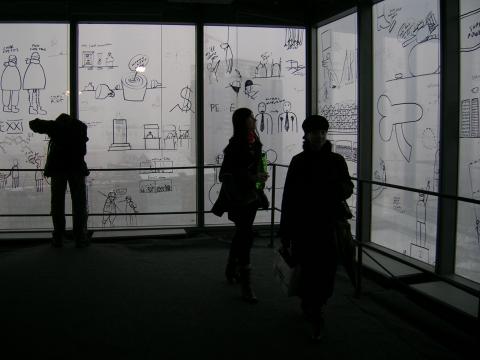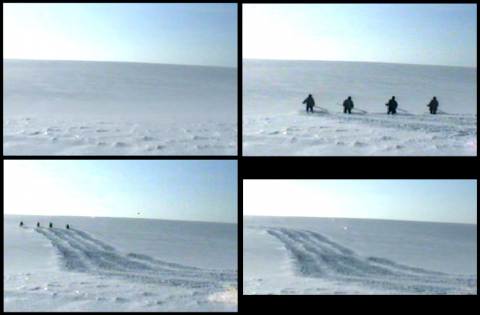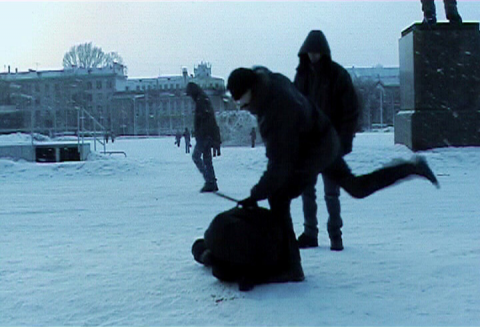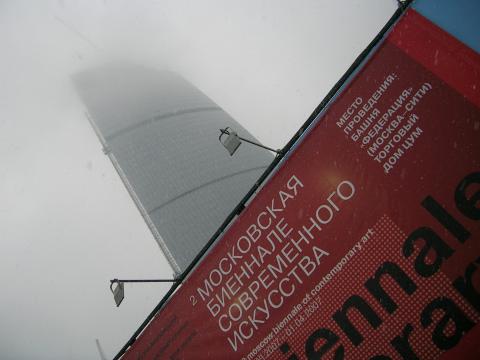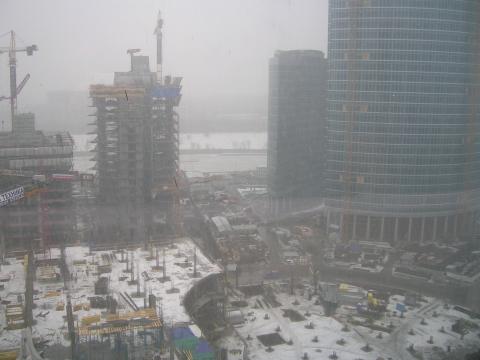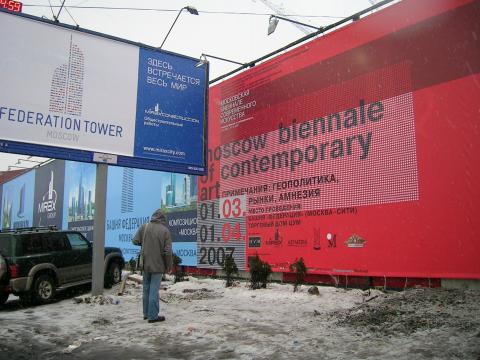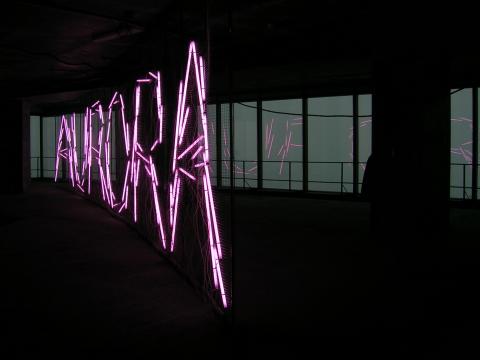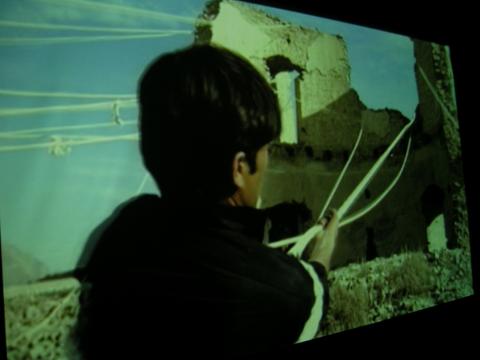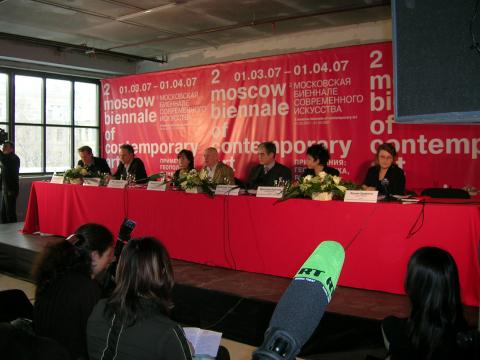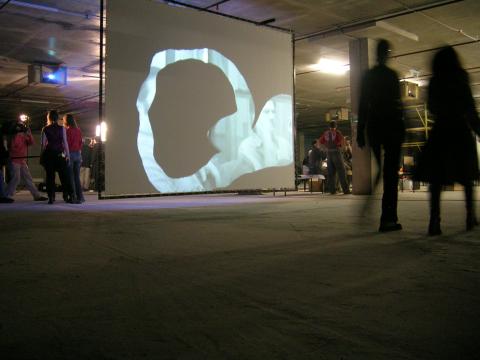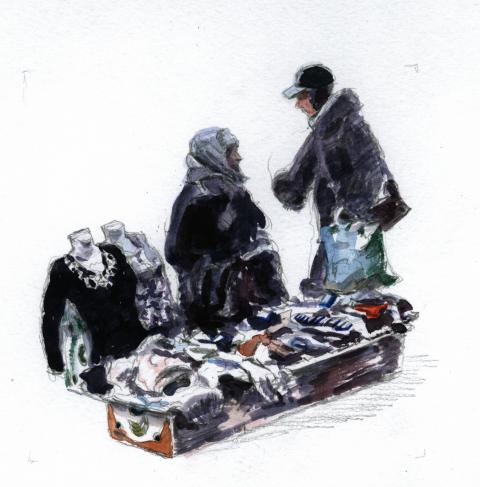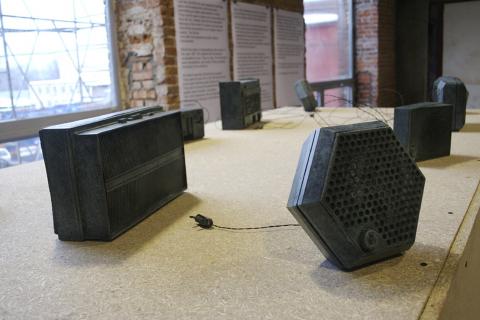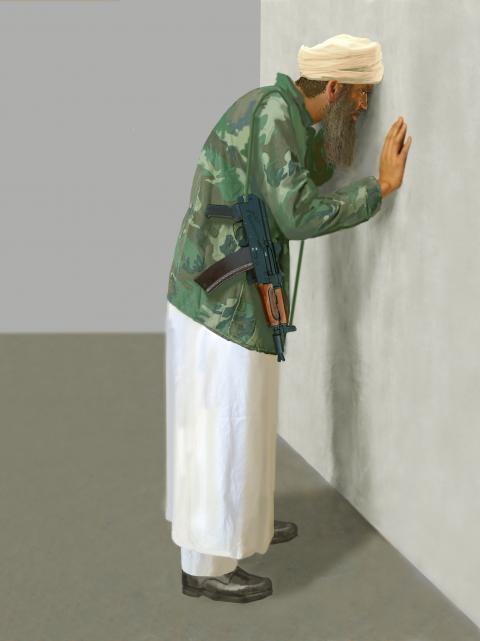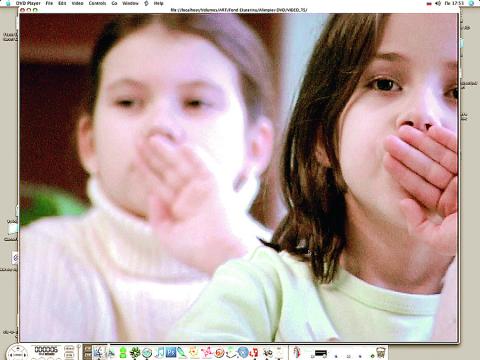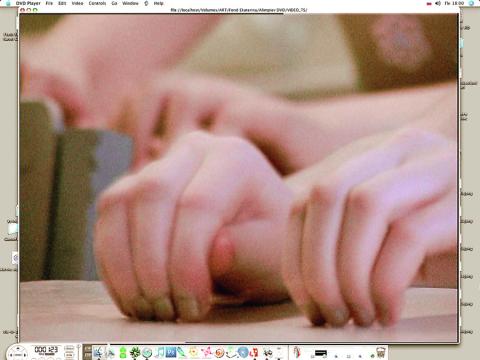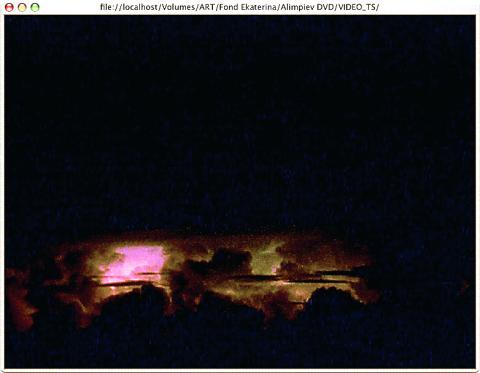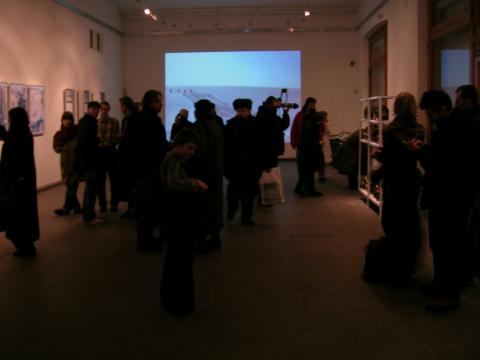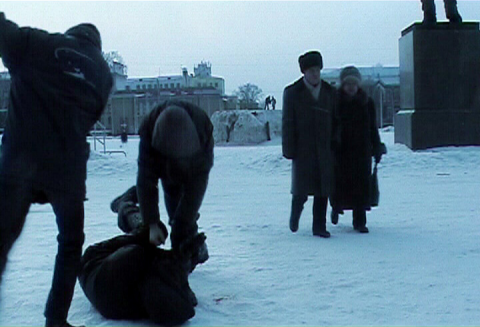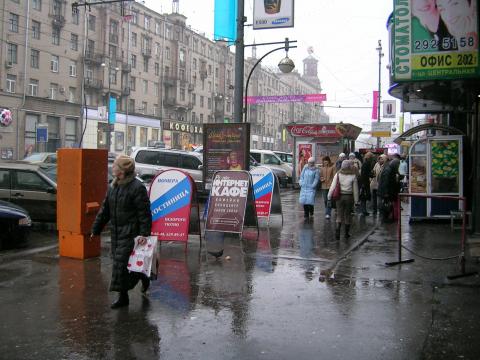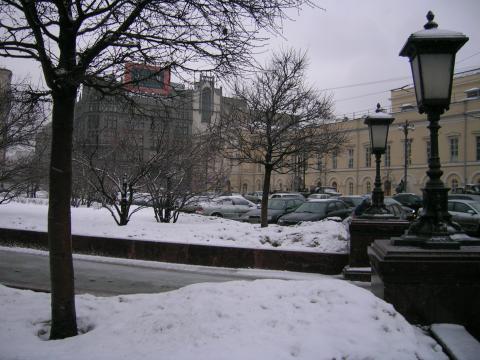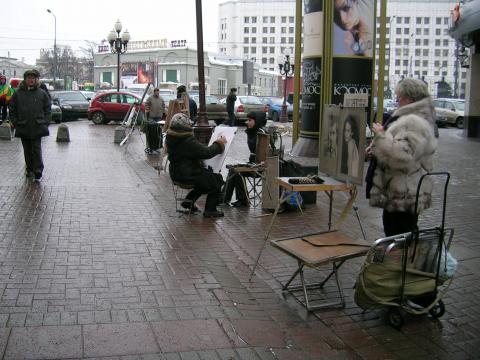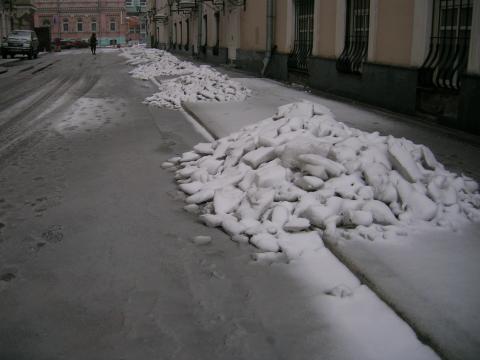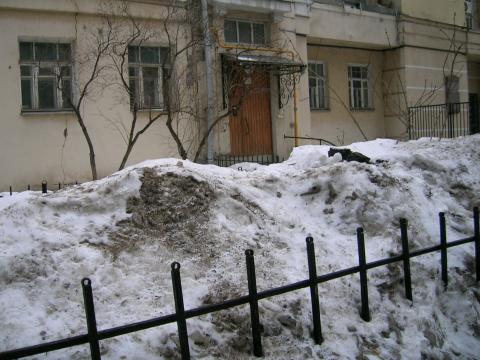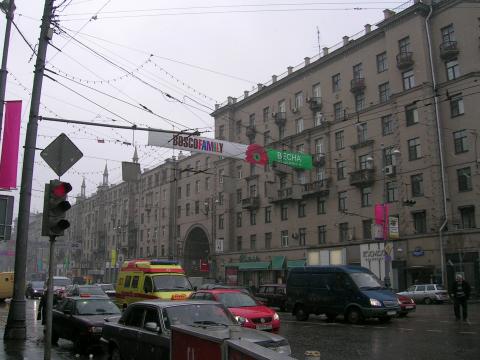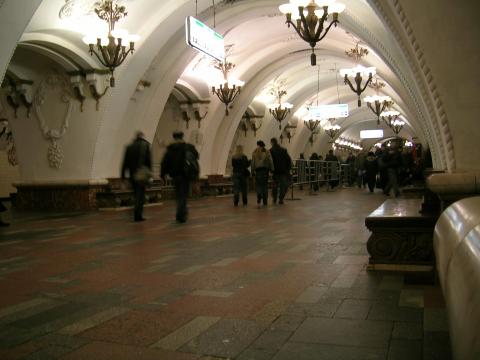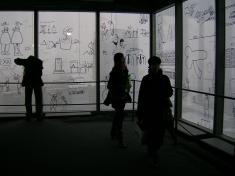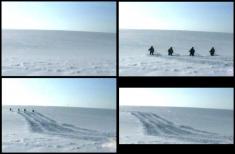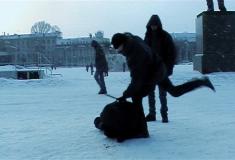Quiet flows the Volga
2nd Moscow Biennale, 2007
We had only been talking for ten minutes on the final approach to Domodedovo airport when Sergey turned in his seat to look me in the eyes intently and said “make sure they take you to the forest; and if they don’t take you to the forest, here is my card; call me and I will take you to the forest.” Well, I was taken to the forest, but not by Sergey.
My second visit to Moscow was to attend the opening of the city’s 2nd Biennale of Contemporary Art and because my experiences during a brief visit in 2005 were luring me back: good friends and the city’s frenetic entrepreneurial energy contrasted with intensity, resignation and openness to chance. I also wanted to taste Moscow’s winter: -15°C when I arrived, but six days later, though still under continuously grey skies and frequent snow showers, the thaw was palpable at -3°.
Biennale Commissioner, Joseph Backstein, and an international curatorial team of Daniel Birnbaum, Iara Boubnova, Nicolas Bourriaud, Fulya Erdemci, Gunnar B Kvaran, Rosa Martínez and Hans Ulrich Obrist presented exhibitions showing over 100 artists from 35 countries in two key locations: Federation Tower in a vast new construction zone on the third ring of Moscow that is being likened to the city’s Manhattan; and the chic and expensive department store TsUM, a stone’s throw from the Kremlin. There were also more than 20 special projects hosted by state museums and galleries, libraries, art and architecture schools, dealer galleries, and various colonised spaces.
In this mix there were few opportunities to see emerging artists; one exception was Witness to the Impossible at Moscow Centre of Art. The striking work here was a grainy, monochrome, single-channel video projection which dominated one wall of the Centre’s modest gallery. Road (2005) is by Where The Dogs Run Group comprising Olga Inozemtseva, Alexey Korzukhin, Vlad Bulatov and Natalia Grekhova from Ekaterinburg in the eastern Urals. In the video four individuals do an irrational act – an impossible act. At first all one sees is a vast white emptiness: a snow-covered rolling plane and a sky as white as the snow. Then slowly, the figures appear from the right. Moving in unison they advance across the field, scything the snow, and disappear into the distance.
Road is the pivotal work for curator Yulia Aksenova because it exemplifies the way Russian artists today recruit the impossible and irony to point to, albeit fragile, utopian futures. The Group’s home city, Ekaterinburg, endures a winter of 5 months with temperatures of -40°C and summers of only 65 days. Given this, an image of scything snow either asks whether hope for better days is possible, though tenuous, or chillingly infers that hope may have passed already.
Of the same generation, though more established, Victor Alimpiev’s work is also animated by a dialogue between the real and the imaginary. In a 2003 video, luscious high-key close-up shots show young girls at school drumming their short painted nails on their plastic desk tops accompanied by a soundtrack of their drumming and something like explosions. These shots are repeatedly interrupted as the girls stop drumming and alternately stare forward self consciously, perhaps conspiratorially, or they stop and raise their hands to their mouths, palms outward. More fleetingly interspersed are images of a dark sky and the yellow-orange glow of explosions along a cloudy or smoky horizon. The explosions continue while their fingers drum, and cease when they still their hands or raise them to their mouths. Is this mock horror? They look too knowing, too aware. The way the girls cover their mouths suggests a collective lie, or at least a flirtation with deception. In retrospect the perception of bomb blasts seems like an unavoidable fiction, and the lie is only revealed with the title of the film which comes, like other Alimpiev films, at the very end: Summer Lightning (2003). What had first appeared like the dark mischief of girls from Midwich Cuckoos now seems more like the folding together of a gentler paradox, something like the blurred line between waking and sleeping, between hope and reality in every young girl’s journey into love and sexuality.
Paradoxes abound for the visitor to Moscow. It was in the high chic glamour of TsUM that Bulgarian curator Iara Boubnova mentioned to me that the Biennale’s philosophical conference, held in the store’s raw 4th floor redevelopment, donated to the Biennale, had been piped in its entirety, in Russian, through the department store’s PA system: “Something we have learned in this country, that you need to take every opportunity to educate the people!”
When I met painter, photographer and video artist Olga Chernyshevain 2005 I was impressed by a very similar pragmatism and by the way she sought to engage general audiences in her conceptual practice. Her video works are a poetic-conceptual engagement with the almost invisible or forgotten details of Moscow daily life, often catching individuals or small interactions with a hand-held camera, thus engaging with the increasing atomisation of Russian society. The recent flourishing of individuality and self-help therapies sits against a background of ingrained collectivism and not long-past state regulation of social relations. Chernysheva is aware that showing her videos unaccompanied to Russian audiences would be too esoteric, so in certain contexts she shows them with the drawings, or shows the drawings on their own. The drawings are actually derived from the videos, but they present ideas in a form that is familiar and conventional, reminiscent of the way Russian school children are introduced to paintings as devices for developing social and political understanding.
By contrast my encounter with the forest was a journey into the unfamiliar. My friends Elena, Maxim and Dina had conspired to take me on an adventure, so one night we drove deep into Russia, to the Volga River near Dubna. We walked on the dam bridging this longest river in Europe; huddled together around a phone while a Russian friend, another Elena, in Germany sang us a traditional Volga song while we stood on the frozen river; admired Russia’s tallest statue of Lenin; drank something strong and warming around the open boot of the car with our feet freezing; and drove through many kilometres of frozen countryside. I arrived back at my apartment without sleep at eight the next morning, showered, dressed and went into the next round of gallery visits and previews. But on this adventure they also took me to the forest: unannounced we drove off the highway, deep, deep into a pale, snow-cushioned, leafless birch forest along a narrow undulating track. The car stopped and I was told to get out and walk. I stepped off the icy track and into the powdery snow, thigh-deep; I walked until I could neither hear my friends nor see the car.
I stood there among the pale flecked birch tree trunks, under a full moon partly obscured by clouds, everything glowing white – and I could hear the silence.
Originally published as Dispatch from the 2nd Moscow Biennale of Contemporary Art, March-April 2007 in Art News New Zealand, Winter 2007, pp108-111.
